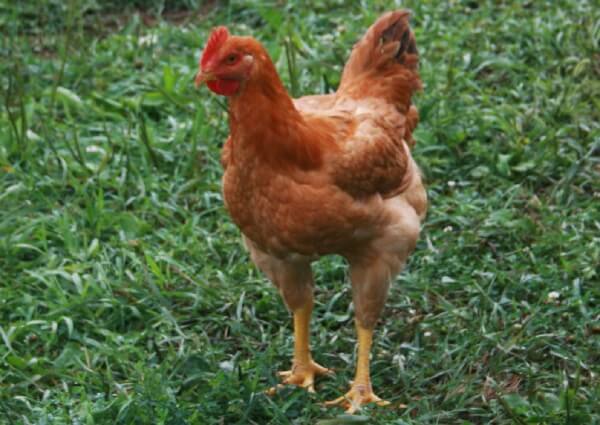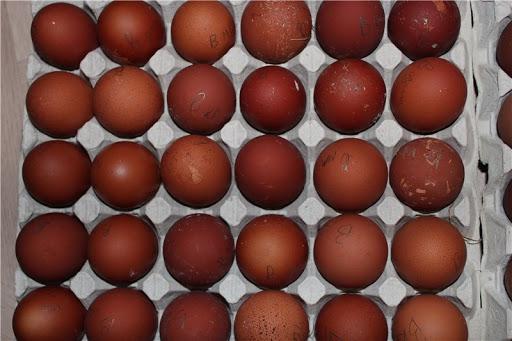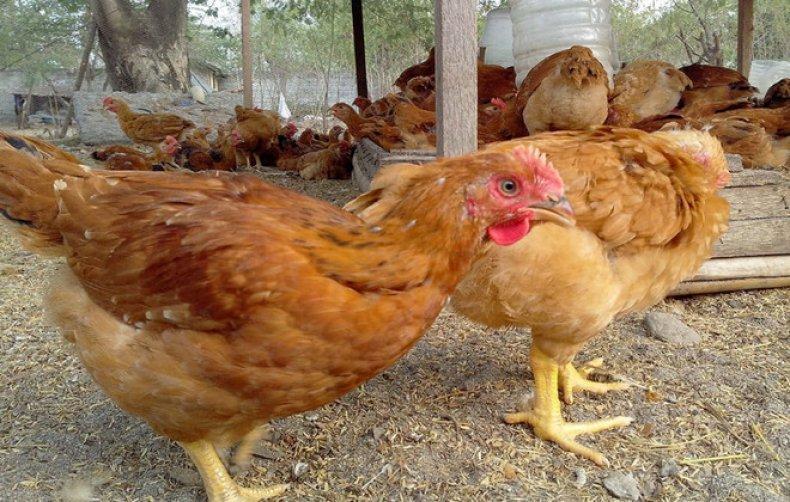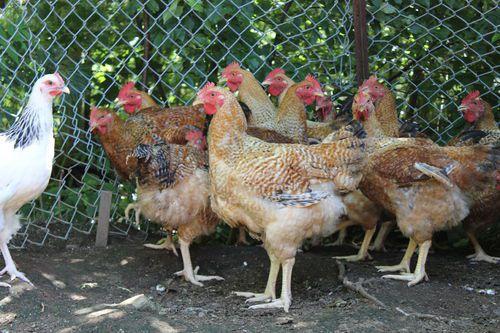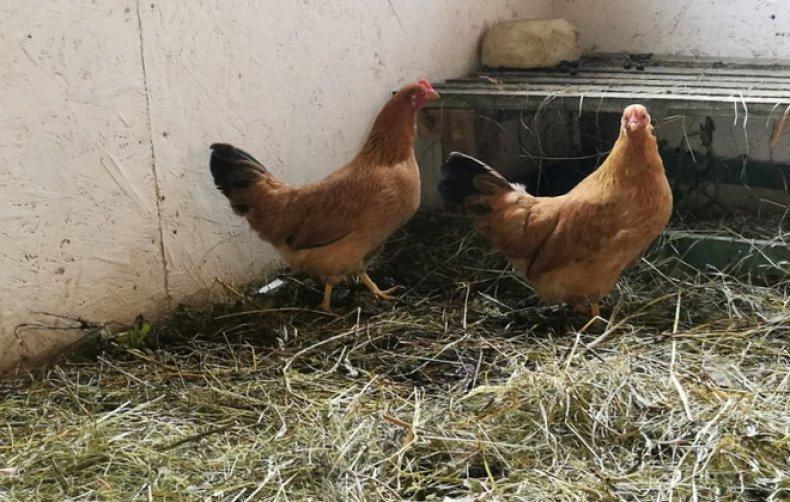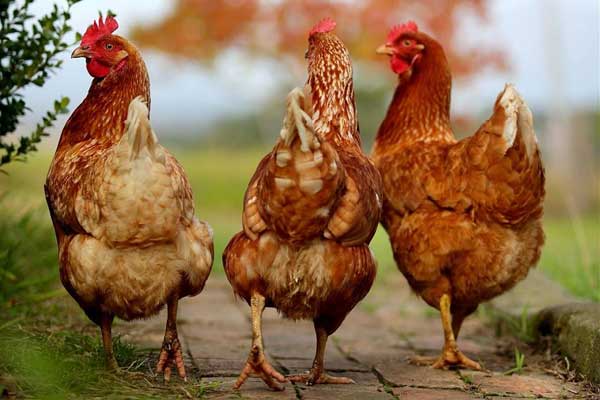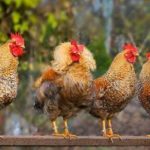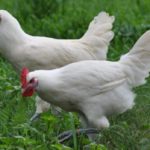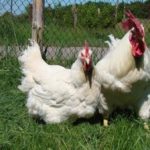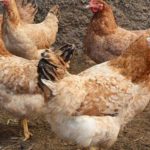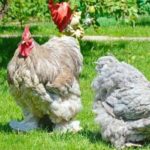When breeding broiler poultry, poultry farmers give preference to colored species. It is Sasso chickens that are distinguished by their meatiness and record-breaking rapid weight gain. The bird is not picky about food, and its meat is nutritious and has a pleasant, unique taste. Thanks to the advantages of the breed, it is not difficult to breed Sasso broilers at poultry farms and private farms.
- Origin story
- Description and characteristics of the broiler
- Exterior and color
- Productive qualities
- Weight and maturation
- Meat
- Eggs
- Character specifics
- Advantages and disadvantages of chickens
- Breed varieties
- Subtleties of keeping and caring for Sasso chickens
- In a poultry house with a walk
- In cells
- Molting and break in egg laying
- Planned herd replacement
- Diet and feeding order
- Breeding Features
- Diseases and prevention
Origin story
French breeders worked for about 10 years to develop the breed. Fighting birds were used to produce colored broilers. The Sasso breed has subspecies that differ in productive characteristics and colors. Distinctive features of colored broilers are meatiness and early maturity.
Description and characteristics of the broiler
Broiler chickens have productive advantages over conventional breeds, and also differ in appearance.
Exterior and color
The Sasso bird is characterized by a unique appearance: a strong, low-slung body, a wide chest and a small head. The sasso broiler has small earrings and a comb, and a medium-sized, light-colored beak. Relatively short wings. The original combination of multi-colored plumage with yellow paws and dark sand-colored skin sets Sasso chickens apart from other birds.
Common plumage palettes for colored broilers: brick red, black, fawn. A stiff feather grows densely.
Productive qualities
Naturally, it is the productive characteristics that determine the demand for individual breeds.
Weight and maturation
The advantage of the Sasso bird is its rapid growth and weight gain. Good care provides the chicks with a daily weight gain of about 60 g. Therefore, after 8-9 weeks, the chicks gain weight of about 2 kg. Adult hens grow to weigh about 4 kg, and roosters can weigh 6-7 kg.
Meat
A tender and juicy structure is a feature of Sasso chicken meat. Therefore, it is a suitable product for preparing dietary dishes.
Eggs
Typically, broiler chickens cannot boast of egg production. If the bird is provided with adequate nutrition and proper care, then 120-150 eggs can be collected per year.At the same time, it is necessary to take into account the nuance of the breed - the first clutch of chickens will not please poultry farmers soon. The chicken begins to actively lay eggs at the age of 6-8 months, although some individuals can lay eggs after 11-12 months.
Character specifics
The bird has an easy-going character. Although the ancestors of the Sasso were from fighting breeds, modern broilers are not prone to aggression. Sometimes timidity is observed, which can negatively affect the egg production of chickens. Since the Sasso breed is bred primarily for meat, shyness does not create problems during cultivation.
Advantages and disadvantages of chickens
The Sasso broiler breed is very popular among poultry farmers due to several advantages:
- strong immunity provides resistance to common avian infectious diseases;
- young animals show a good survival rate;
- affordable price of chickens (chicks several days old can be purchased for 75-85 rubles).
The main disadvantage of the Sasso breed is its sensitivity to grooming. Poorly maintained birds not only reduce their productivity, but can also become ill.
Breed varieties
Chickens sasso xl 551 (France) are of the meat type. The breed is famous not only for its juicy, tasty meat, but also for its chickens that grow quickly and rapidly gain muscle mass. Moreover, to raise meaty poultry, you do not need to use hormones or special additives.
Subtleties of keeping and caring for Sasso chickens
French breeders are constantly working to improve the characteristics of the breed. Sasso broilers adapt well to any climatic conditions.
In a poultry house with a walk
A spacious walking yard guarantees optimal conditions for the development of chickens.There is no need to create a high fence around the perimeter of the site. A bird with short wings and a massive carcass is simply not capable of flying over the fence. When arranging a patio, it is necessary to build a canopy in the corner so that the bird can take shelter during the rain.
In cells
To grow in cages, it is not necessary to create special conditions for Sasso broilers. To save space, the cages are installed in 3 tiers. The number of livestock in a cage depends on the age of the chickens. Basic measures for caring for chickens: regular replacement of litter, regular disinfection of cages. To provide natural protection against parasites, ash baths are periodically organized for the birds.
Molting and break in egg laying
Since the Sasso breed is a meat breed, the problem of reducing or stopping egg laying is not a concern for poultry farmers. The rate of molting in birds with different shades of plumage may vary. It is important that the periodic absence of feathers does not adversely affect the health of broilers.
Planned herd replacement
When updating the livestock, it is taken into account that the Sasso chicken breed is bred mainly for meat. Broilers aged 2 months are sent for slaughter. It is not rational to keep older chickens - costs rise, and weight gain slows down.
Of course, there are subspecies of the Sasso breed that gain weight at a moderate rate. The egg production of such chickens pays for the costs of their maintenance. When breeding such laying hens, it is necessary to take into account that 2 years is the most productive period of a bird’s life.
Diet and feeding order
The best option to ensure nutritious nutrition with minimal costs for its preparation is to use factory-made feed.When choosing a species, you need to take into account the conditions of detention and the age of the bird. This diet is characterized by the balance of all elements: carbohydrates, proteins, fats. Also, the necessary vitamins and microelements are present in the right quantities.
| Bird age | Factory feed | Homemade mixture |
| Chickens up to 2 weeks old are given 10 to 25 g of feed. Nutrient mixtures help normalize the functioning of the digestive tract, form the skeleton, and build muscle | The PK6-1 mixture is available in the form of small granules (contains mainly ground corn, crushed wheat, peas, barley, chalk, shells). Contains a complex of vitamins and minerals | Approximate composition:
· corn – 50%; · wheat – 16%; · barley – 7%; · cake/meal 14%. Includes low-fat cottage cheese/kefir – 12% |
| Chickens aged 15-30 days are given 90-120 g of feed. Select formulations with larger granules | PK6-2 mixtures already contain meat and bone meal, lysine, and vegetable oil | Feed composition:
· corn – 48%; · wheat – 13%; · meal/cake – 19%; · meat and bone meal – 7%; · feed yeast – 5%: · young grass – 3%. The food is prepared in the form of a moistened mixture - water/milk is added to the food |
| Poultry aged from 30 days to slaughter (nutrition norm - 140-160 g). Use mixtures enriched with vitamins (for maximum weight gain by broilers in a short period) | Feed type Finish PK6-3. The mixture is available in large granules | Feed composition:
· corn – 45%; · wheat – 13%; · barley – 8%; · cake/meal – 17%; · meat and bone/fish meal – 7%; · feed yeast – 5%; · fresh greens – 1%; · chalk – 1%. Vitamin and mineral supplements. |
Important! It is prohibited to use food waste to feed broilers.
When feeding poultry, you must follow the norm. This is important when preparing the diet for broilers older than 30 days, since exceeding the norm leads to obesity in the bird.
Breeding Features
Sasso Boilers are bred to produce highly nutritious meat in a short period of time. Most often, birds 2-4 months old are slaughtered. It is not rational to raise older boilers, since weight gain slows down and feeding rates increase.
Important! Active weight gain is observed in chickens up to one month old. Therefore, special attention is paid to the issue of bird nutrition during this period.
Diseases and prevention
The advantage of Sasso poultry is its resistance to disease. Of course, this condition is met with regular bird care. If the farm contains a significant number of chickens, it is recommended to periodically use antibiotics. This measure will prevent the outbreak and spread of infectious diseases. Suitable growing conditions, fresh food and regular maintenance are the requirements for breeding sasso boilers. The main thing is that the breed demonstrates productivity at an average cost of input.

